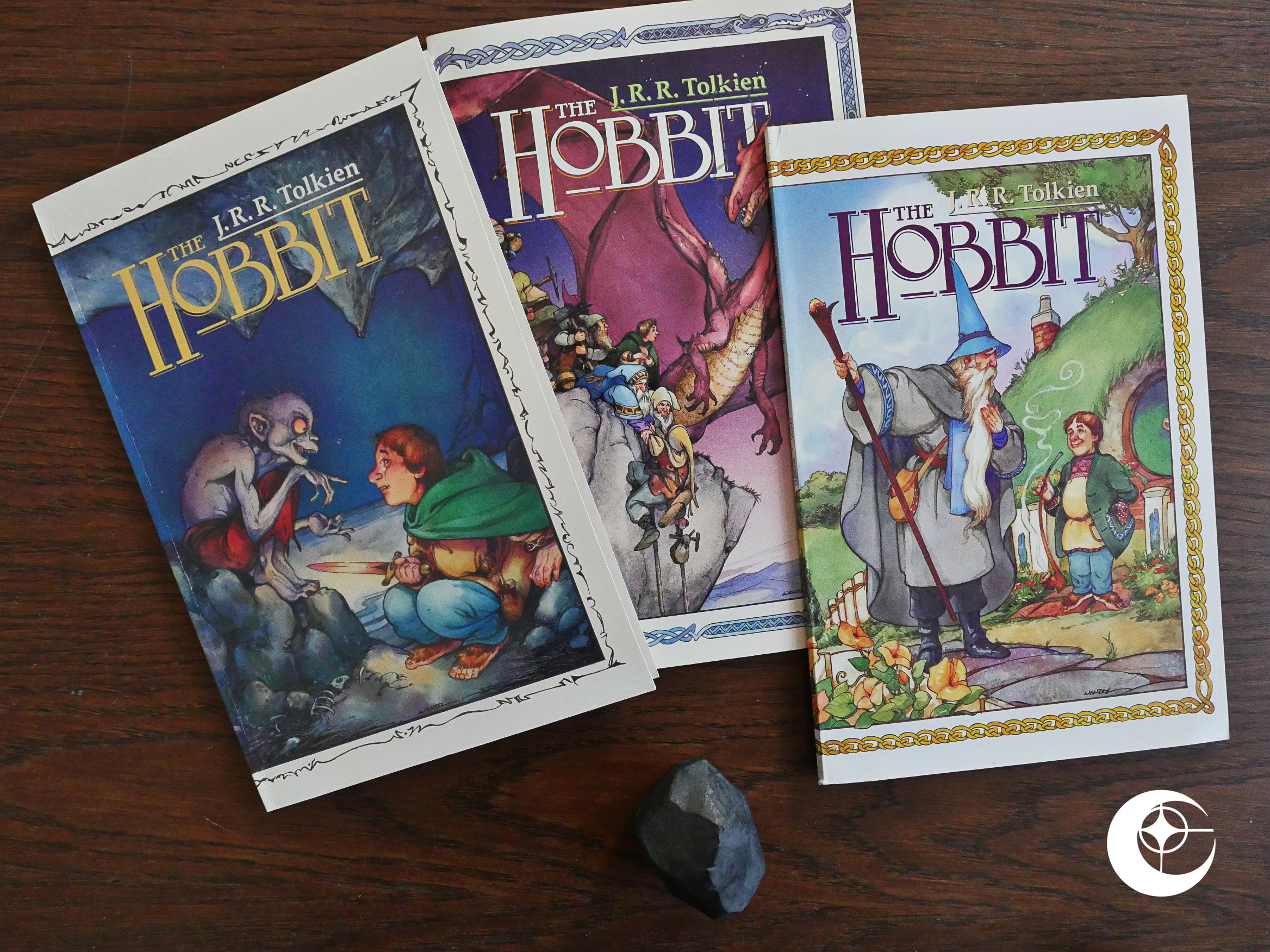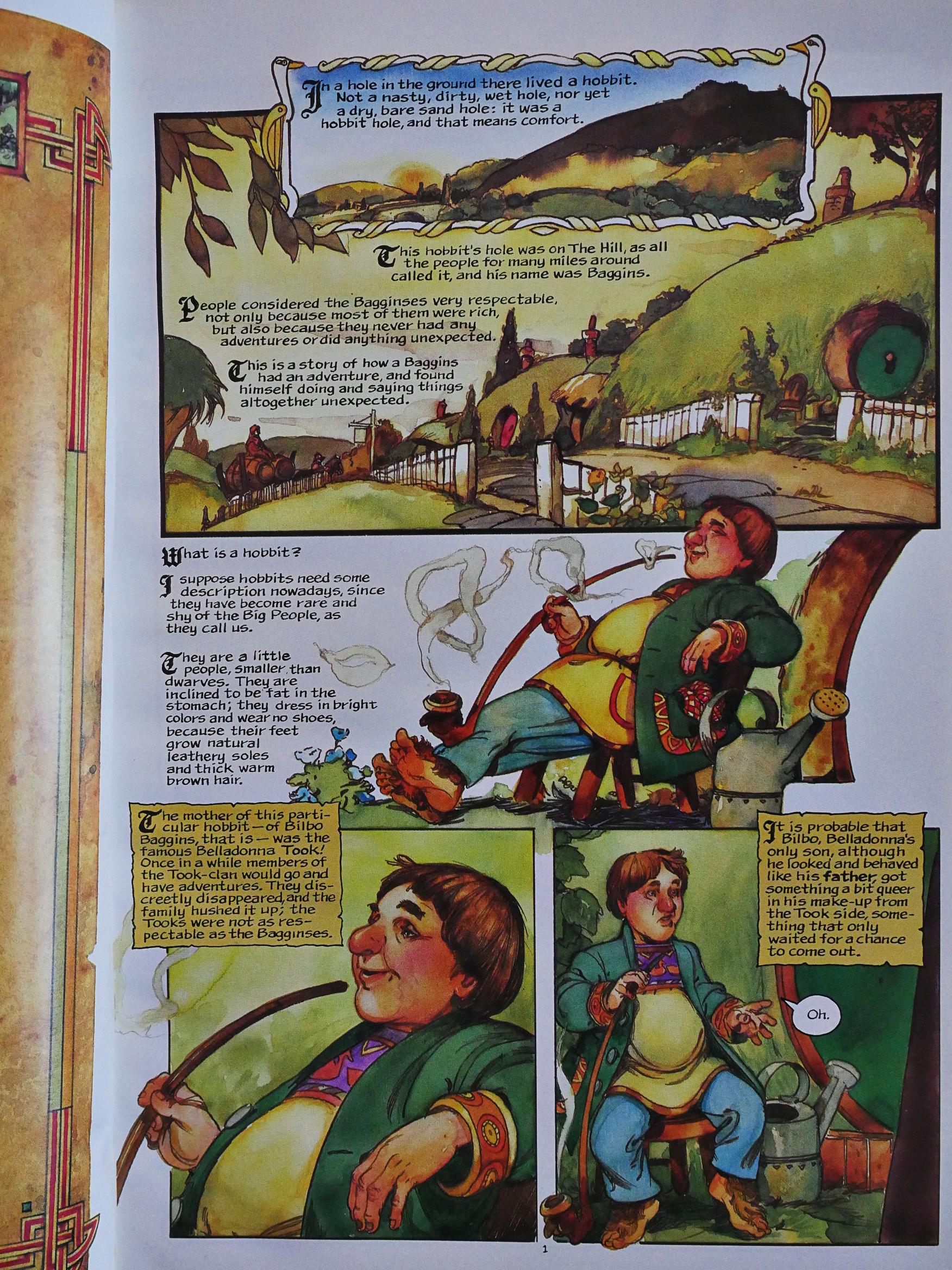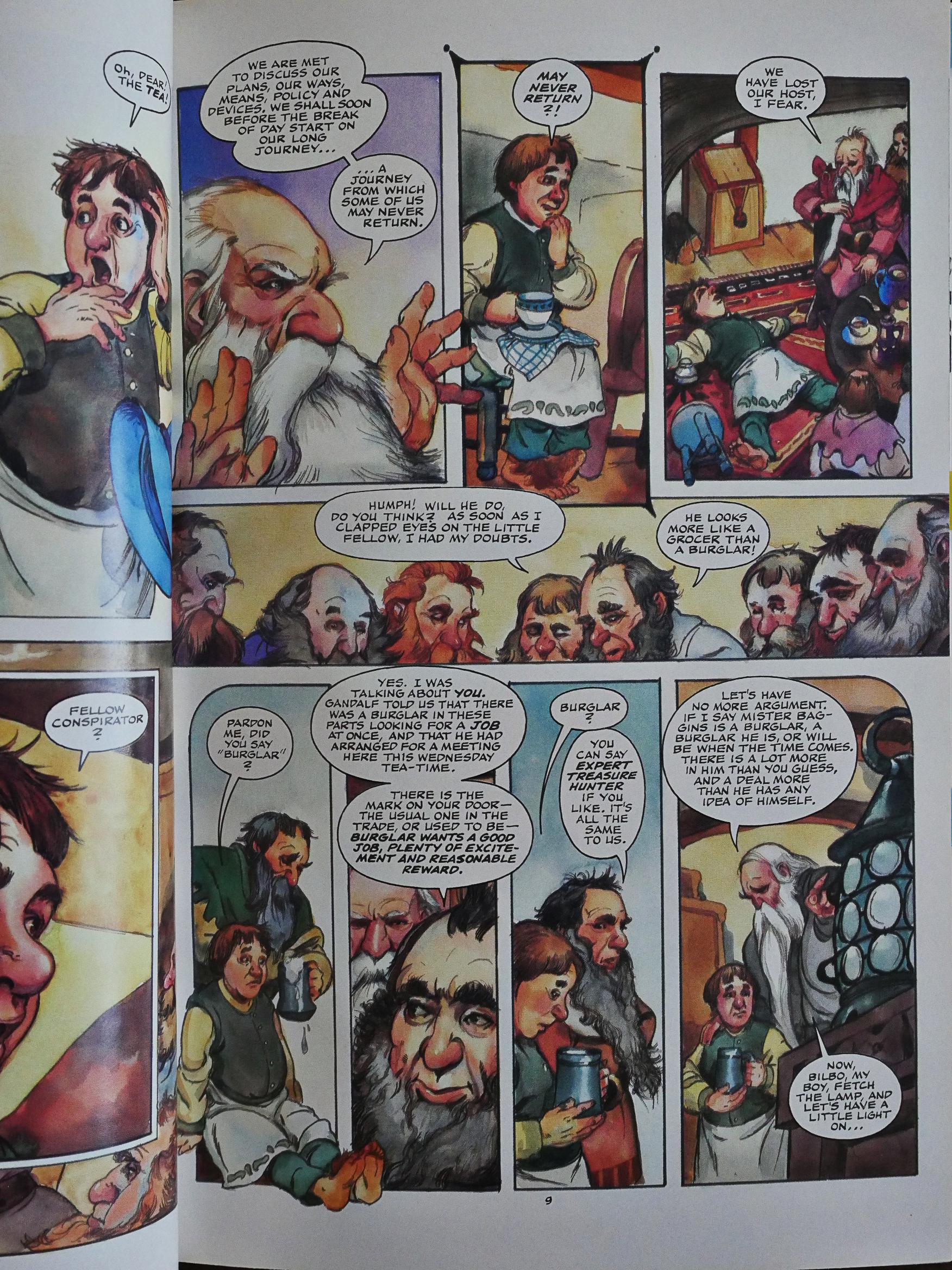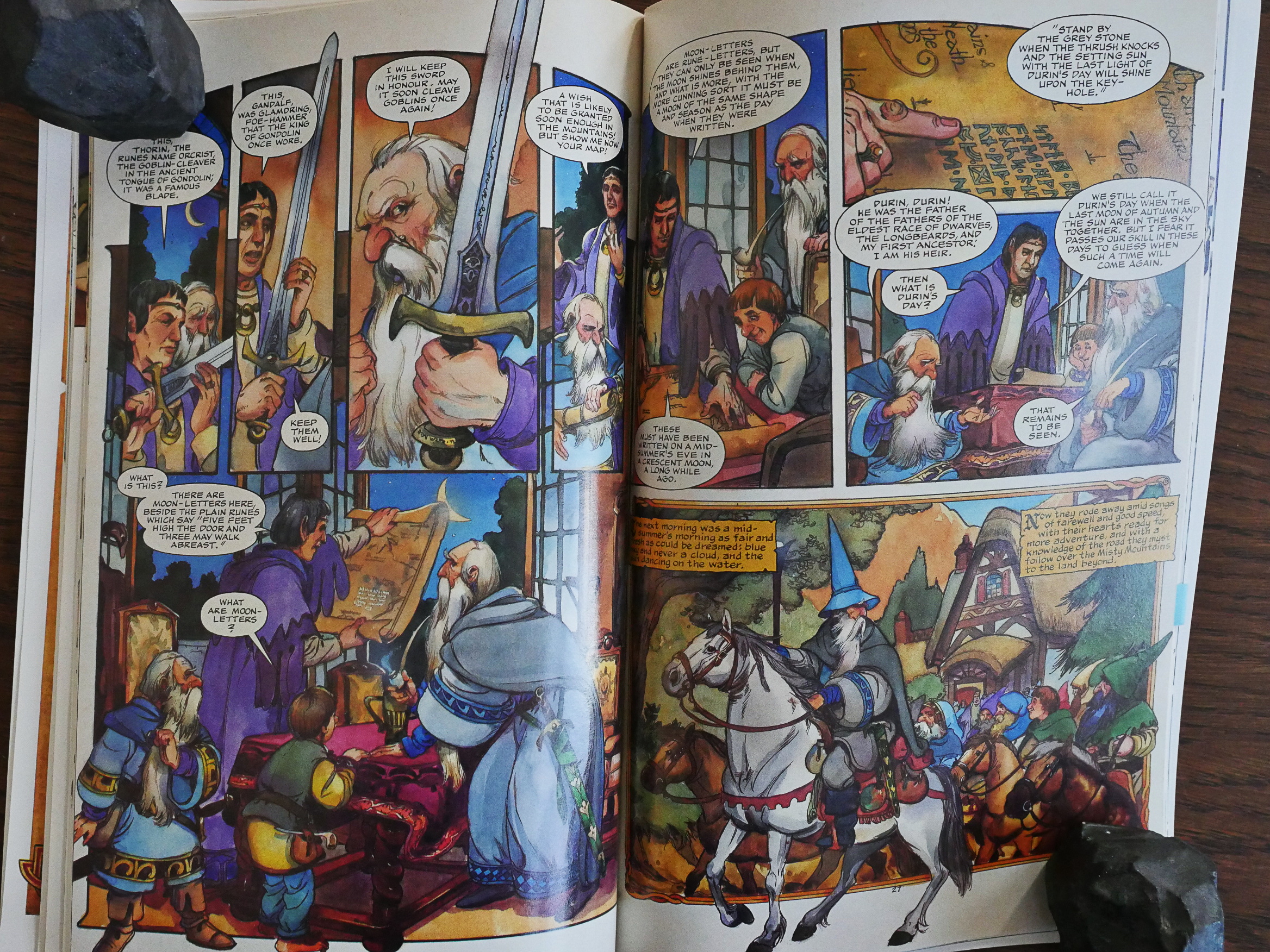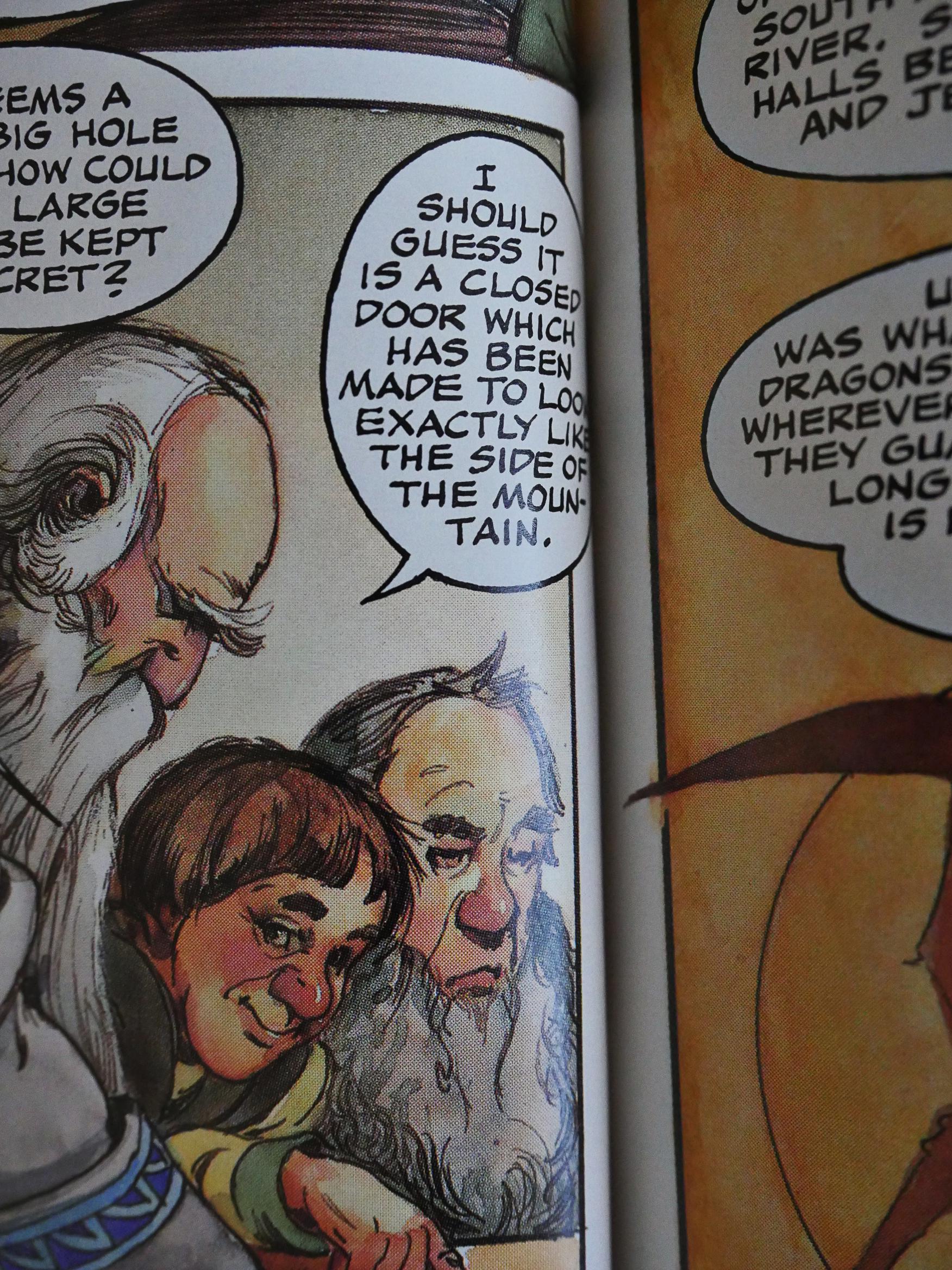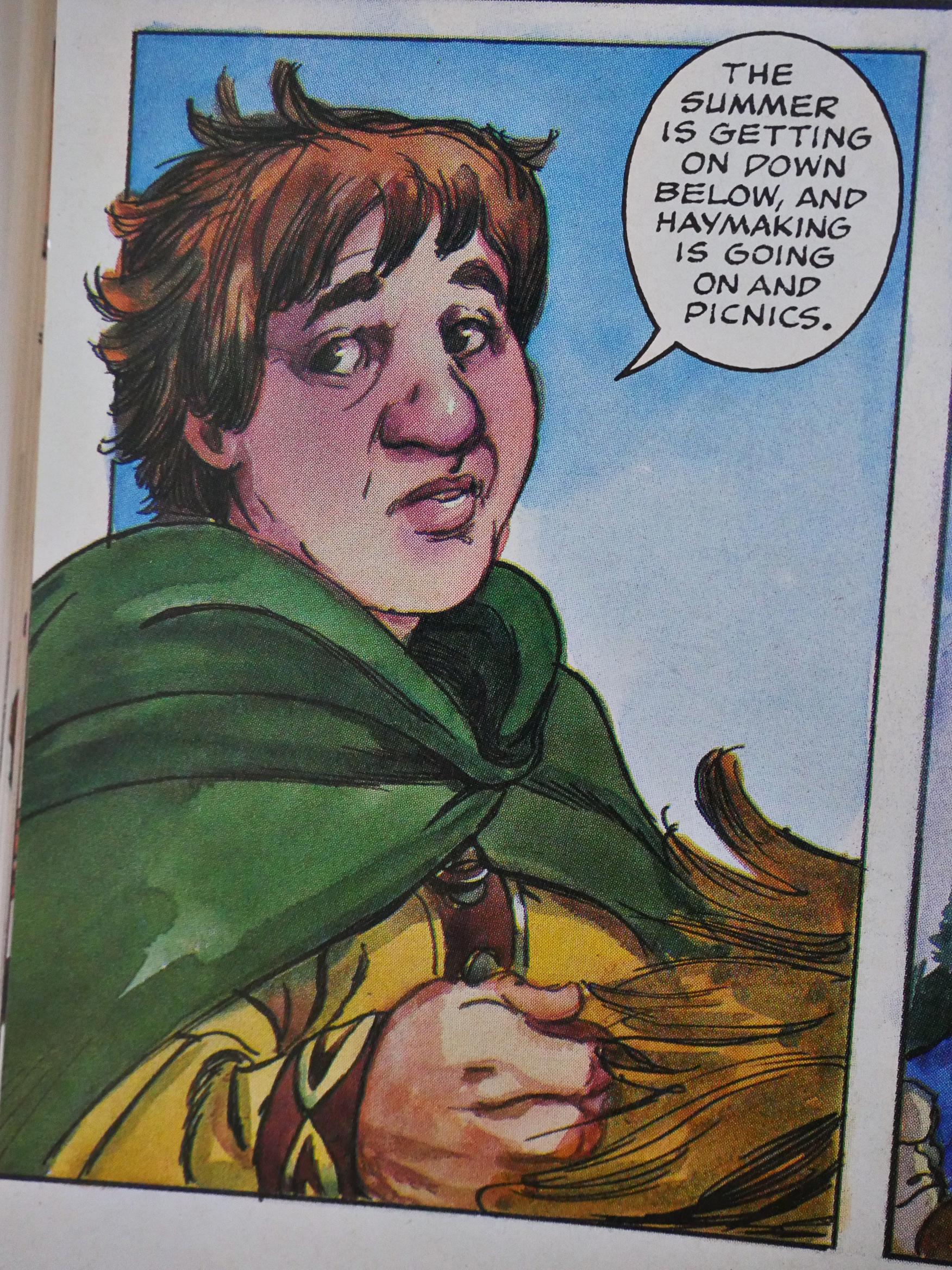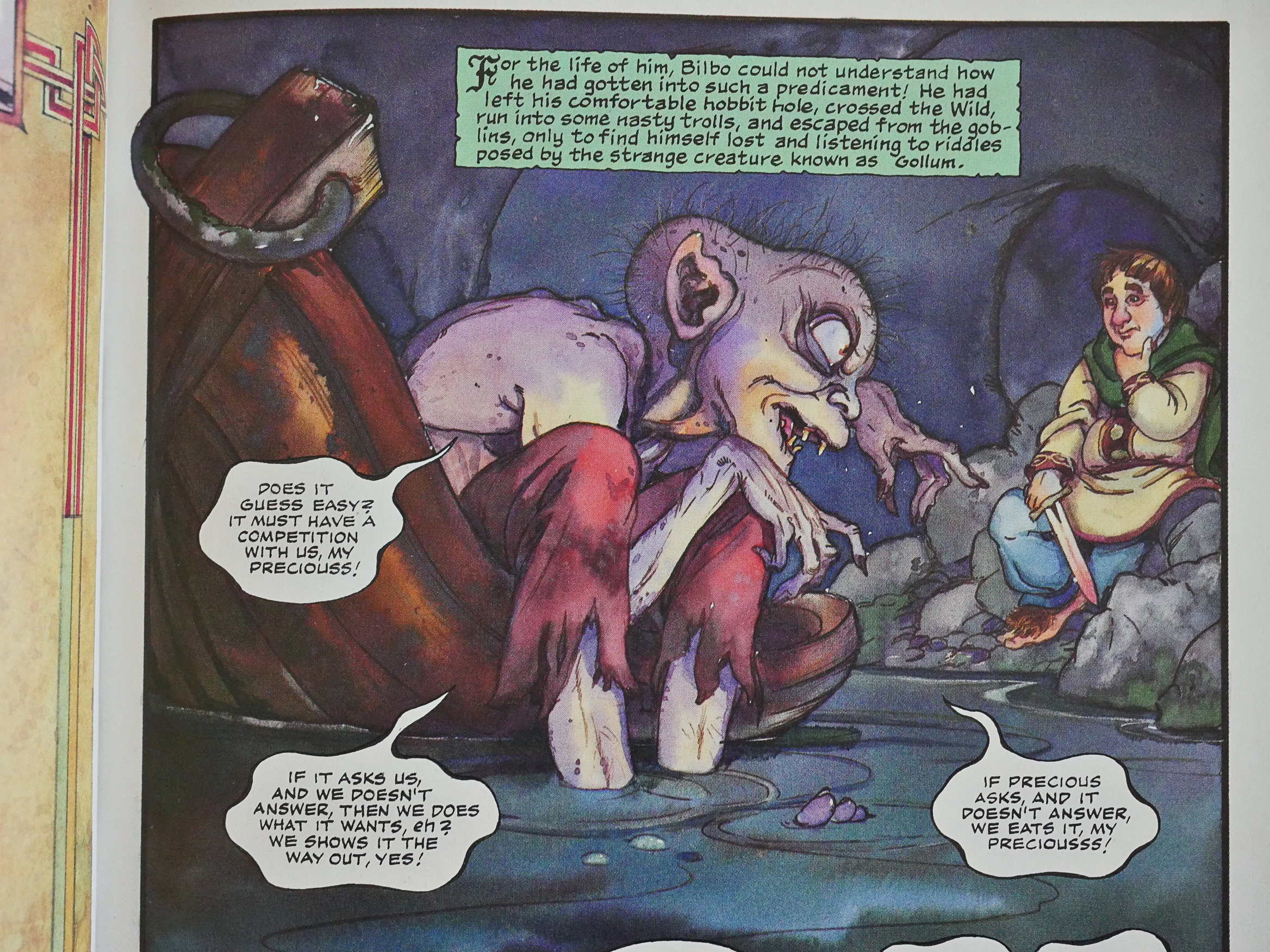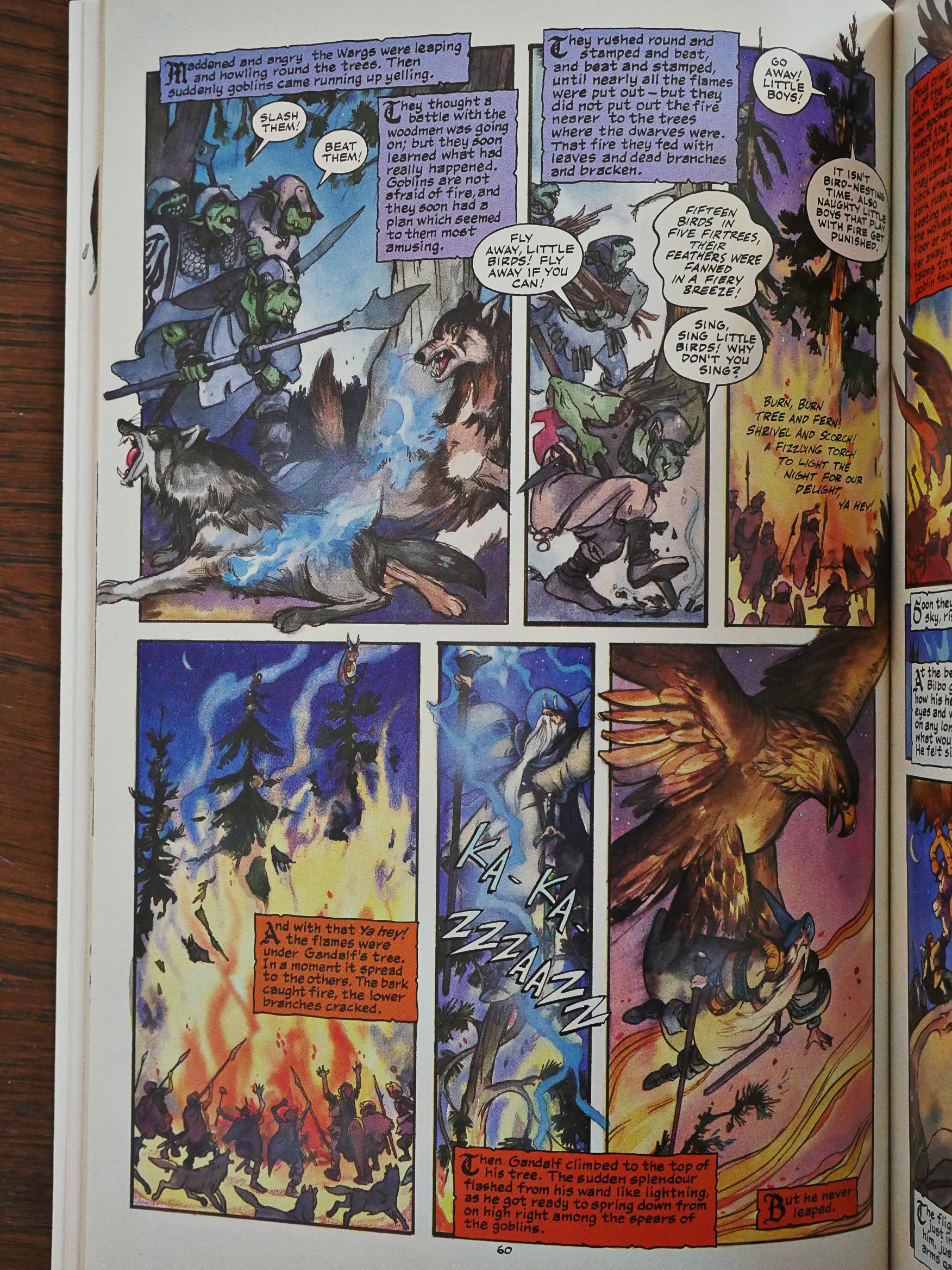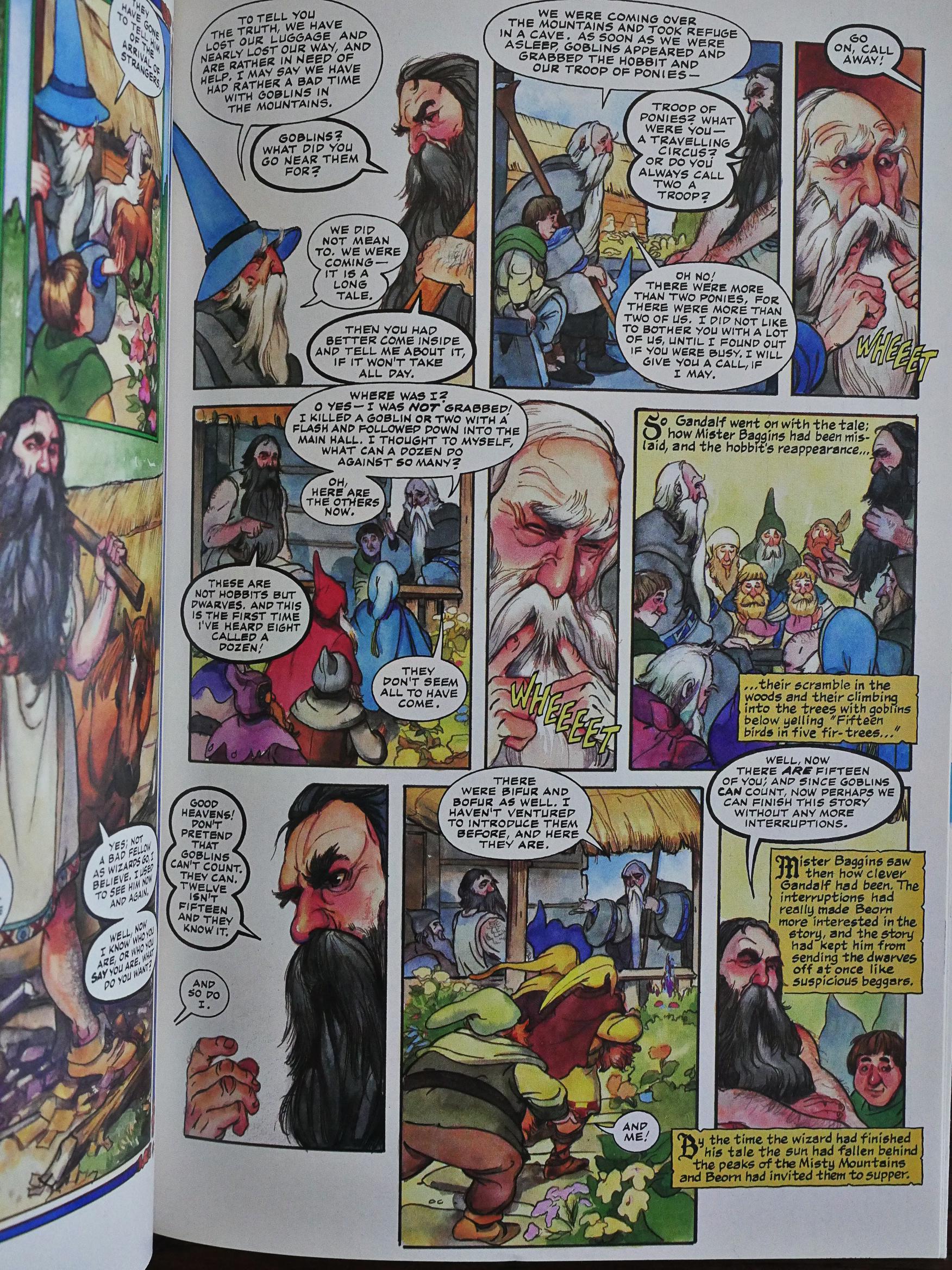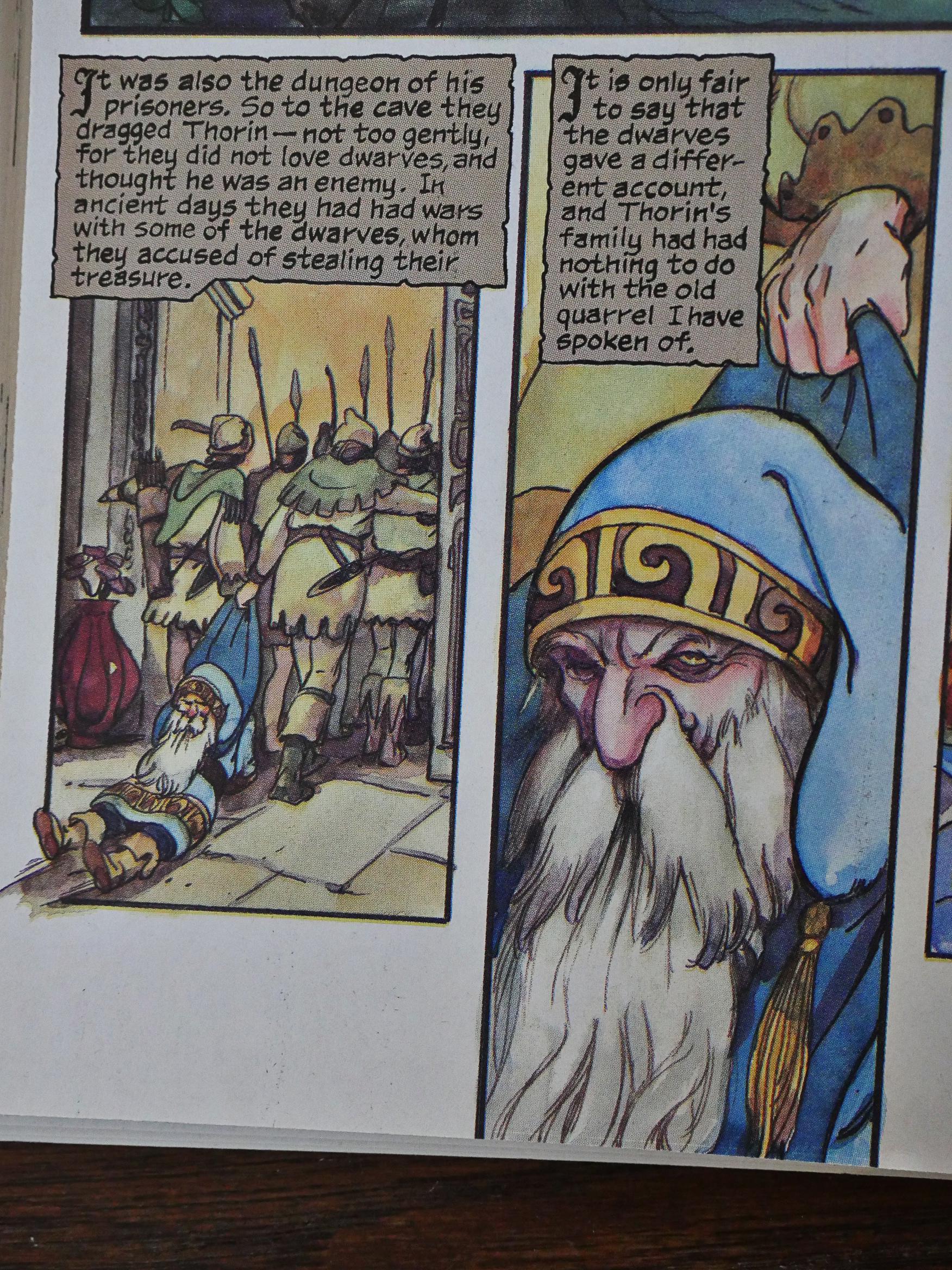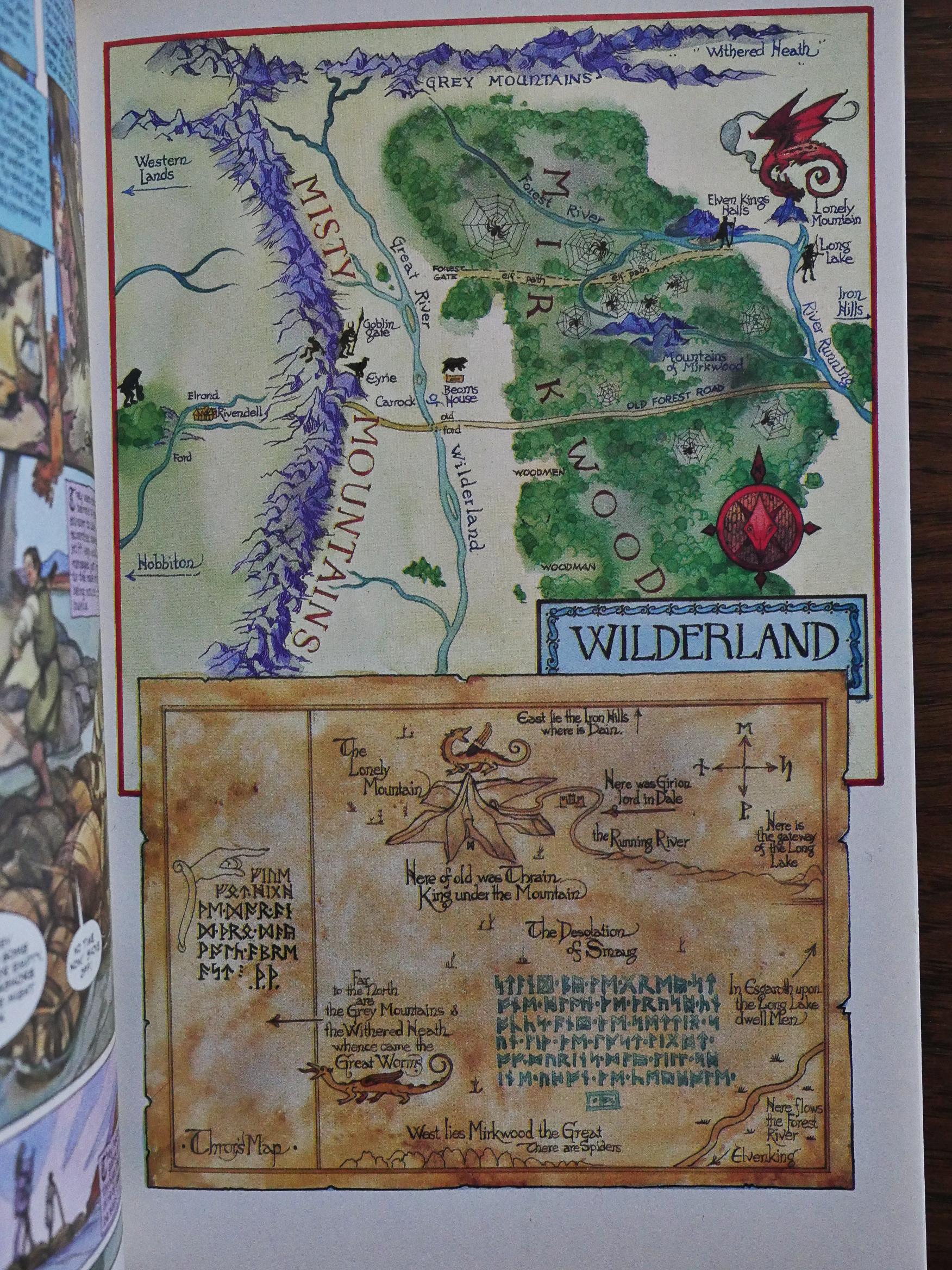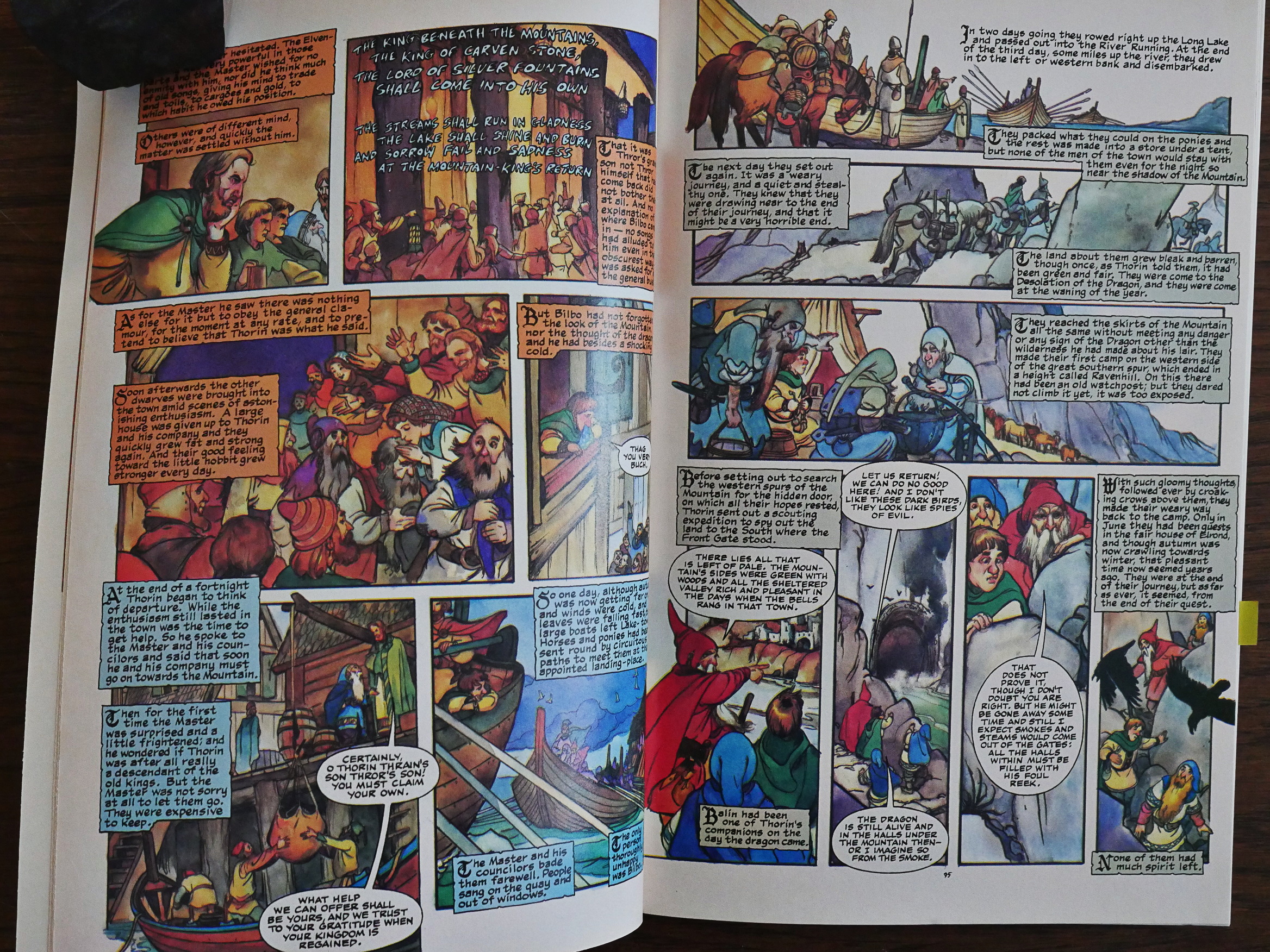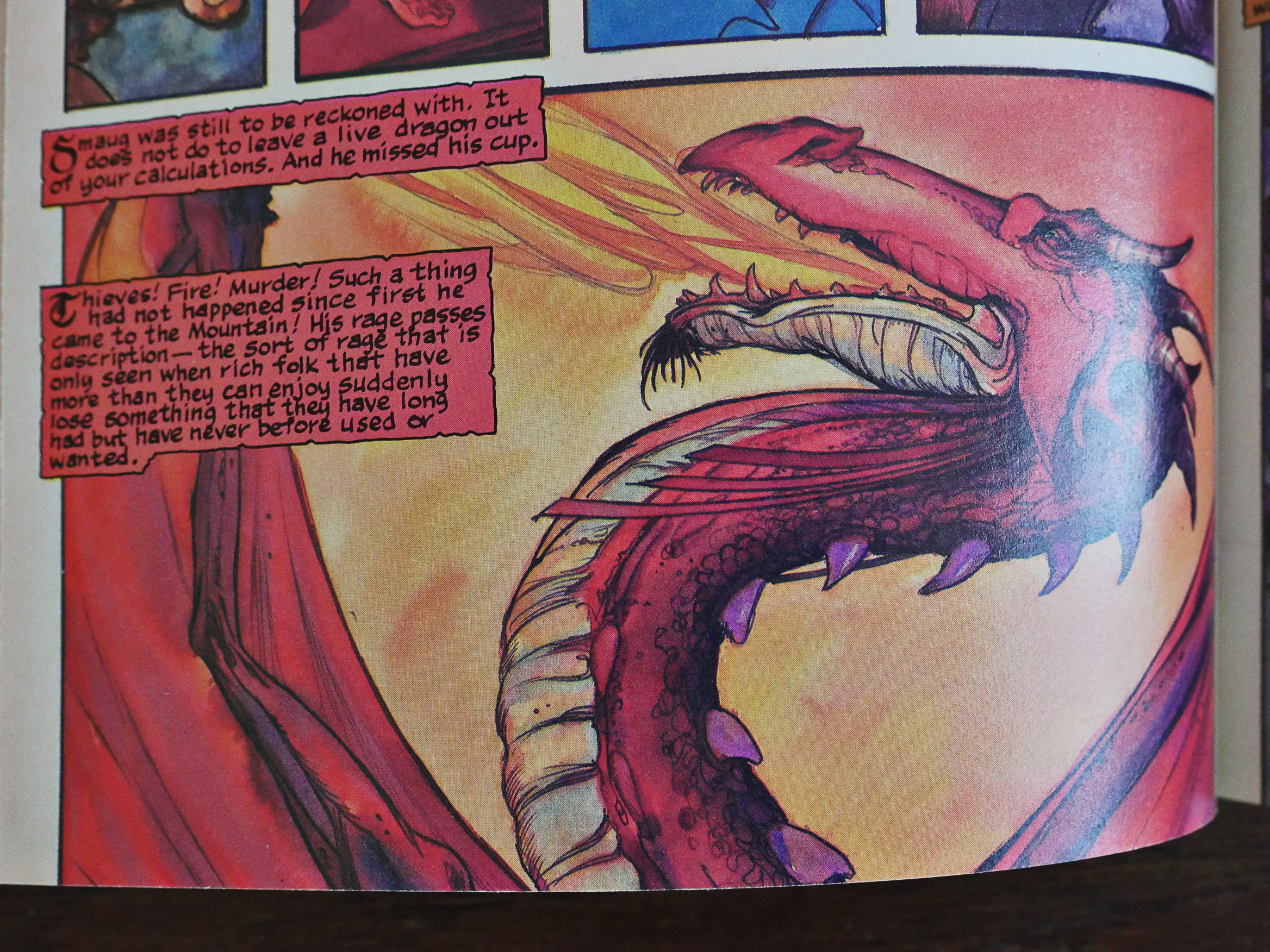The Hobbit (1989) #1-3 by Charles Dixon and David Wenzel.
I sarcastically quoted a guy on Amazon that said the Licence to Kill adaptation was great, except for details like the storytelling?
I think that’s going to my take on this: It was a really enjoyable read, but it’s down to the source material, and not really what Dixon and Wenzel has done with it.
I read The Hobbit when I was like 12, and I thought it was a jolly good fantasy book for children. It didn’t make me into a Tolkien fanatic or anything. Dixon tries very hard to preserve what made The Hobbit special, and doesn’t expand on the story in any way I can discern (which the recent Hobbit trilogy of films certainly did), or other adaptations I’ve read, that condense the storyline. It’s a short book, and this adaptation is 130 pages, so with some judicious editing, you should be able to give a pretty comprehensive version of it.
And they cover it all. They don’t spend hours on the party scene like the recentish film, but with eight pages they do a very reasonable comics version of the scene.
Other things… not so much. Presumably because of space considerations, and because they didn’t want to edit anything out, other characters and locations are introduced and are then over with within a page or two. This makes some sections feel quite choppy.
These comics were originally produced in the “prestige” format, which are squarebound normal US comics sized 48 page books. It’s a nice format, but as is often the case with these books, the inner margins are uncomfortably small so that you can’t read some of the speech balloons without cracking the spine.
Wenzel’s take on these characters isn’t outrageous, but it’s certainly weird to see that face on Bilbo. Ah, the power of movies…
The approach Dixon and Wenzel have taken to the material is to expand some iconic scenes into real comics, like the riddle-off with Gollum.
Other scenes are very compressed, with tons of text explaining both what we’re seeing and what’s left out.
Some of these pages are incredibly dense, like when Gandalf gets into Beorn’s good graces. But it works? It’s like a fairy tale structure (presumably from Tolkien himself), but it’s all done on a single page. I mean, it’s a nice page, but this could easily have been five pages.
Wenzel doesn’t really throw many gags into the artwork, but they’ve got some mirth to them. Like the way Thorin’s dragged by the elves up there… I find it amusing, anyway.
And there’s maps! There must always be maps in Tolkien books.
Pages like the ones above shouldn’t work. They are basically slightly illustrated excerpts of the text from the novel, but somehow I wasn’t bored or impatient while reading them…
But there is a definite problem with the action scenes. The dragon goes into action, and here’s how we’re introduced to that: There’s really no added tension here, and that pretty much goes for all the action scenes.
So: I would have loved this book if I had read it when I was 12. I would have found it almost as good as reading the original thing.
To no great surprise at all, this has been translated into ALL THE LANGUAGES, and has been reprinted in English many times. The last edition is an expanded edition, and I was thinking that perhaps they’d finally doubled the size to make it more of a comicsey reading experience… but apparently only six pages were added.
This review sums the adaptation up quite well:
The ending was what really mattered. It was Bilbo’s ending; it is not about the tragic death of a dwarf who went slightly mad, and then redeemed himself; it is not about a boatman who slayed a dragon, and became a renowned hero: it is about a Hobbit. This is Bilbo’s story and no others. It is a story about a fearful Hobbit found the courage to trick a dragon and save his friends. And that all that matters. This evoked the story much more than that heap of shit Peter Jackson shitted out last Christmas. This stayed true to its roots. And the game of riddles was even better.

